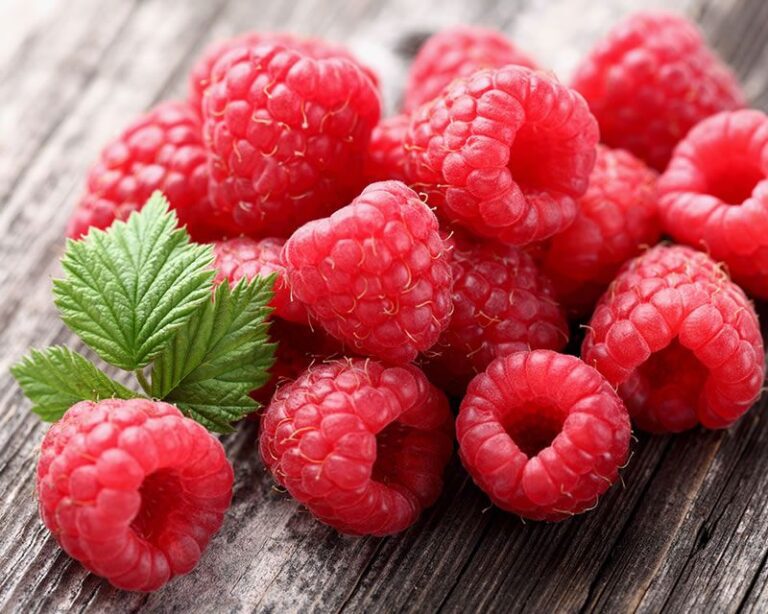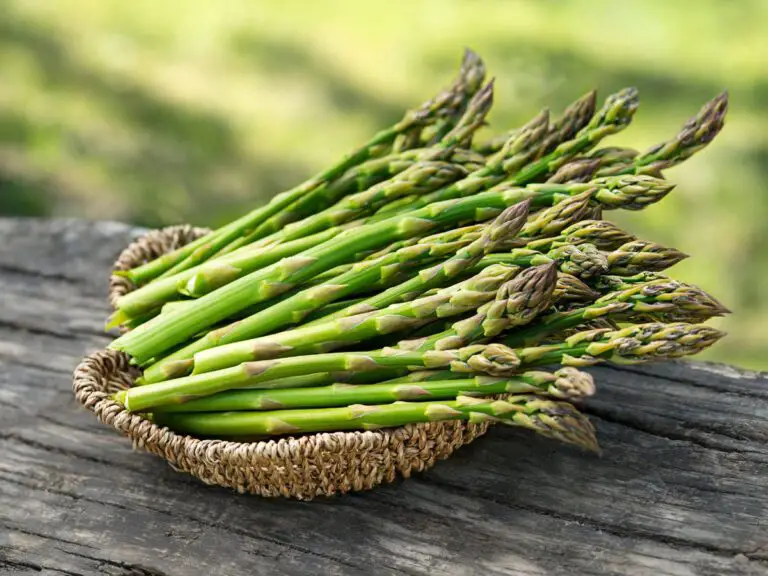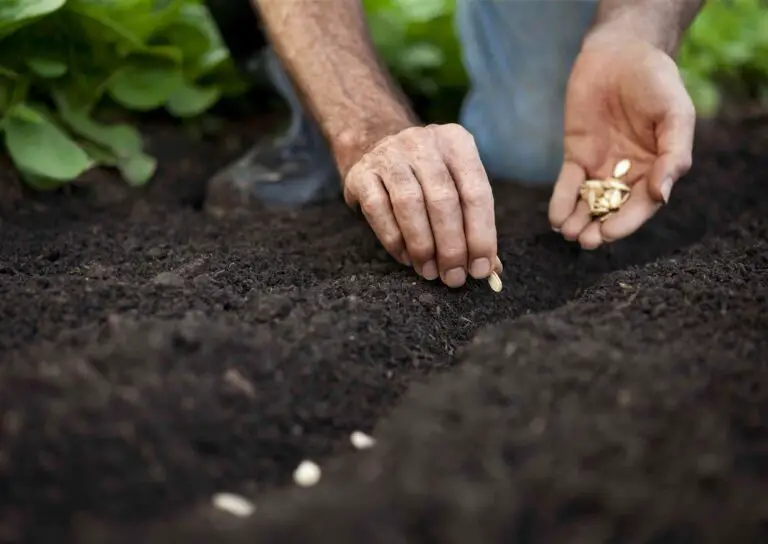Vapor Pressure Deficit (VPD) and VPD Chart: What They Mean, How They Function, and How to Apply Them for Your Plants
Table of Contents
Understanding the Relationship Between Temperature and Humidity
Temperature and humidity are two key factors that play a crucial role in the overall health and growth of plants. Understanding the relationship between these two variables is essential for any gardener or plant enthusiast. The interaction between temperature and humidity can greatly influence various physiological processes in plants, including transpiration, photosynthesis, and nutrient uptake.
Temperature directly affects the rate of plant growth and development. Different plant species have specific temperature preferences, with some thriving in warmer conditions while others prefer cooler temperatures. Plants require a certain range of temperatures to activate enzymes and perform metabolic functions optimally. Insufficient or excessive temperatures can lead to stunted growth, wilting, or even death of the plant.
Humidity, on the other hand, refers to the amount of moisture present in the air. It influences transpiration, the process through which plants release water vapor from their leaves. Transpiration helps plants absorb nutrients and minerals from the soil, and it also aids in regulating temperature. High humidity levels can reduce water loss through transpiration, but it can also create a favorable environment for fungal diseases. Conversely, low humidity can increase the rate of water loss in plants, which can be detrimental, especially in arid regions.
The relationship between temperature and humidity is complex, and it varies depending on the specific plant species and environmental conditions. Finding the right balance between these two factors is crucial for creating optimal growing conditions for plants. By understanding how temperature and humidity interact, gardeners can make informed decisions regarding plant care, ensuring healthier and more productive gardens in the process.
The Impact of Temperature and Humidity on Plant Growth
Temperature and humidity are two critical factors that can significantly impact plant growth. The relationship between temperature and humidity is closely intertwined, and both variables play a vital role in determining the health and development of plants.
When it comes to temperature, different plant species thrive in different temperature ranges. For example, tropical plants generally prefer warmer temperatures, while cool-season crops like lettuce and spinach thrive in cooler conditions. Extreme temperatures, whether too hot or too cold, can damage plants or inhibit their growth. It is essential to provide plants with the appropriate temperature range to ensure optimal growth and productivity.
Humidity, on the other hand, refers to the amount of moisture in the air. It affects plant growth by influencing transpiration, the process by which plants lose water through their leaves. High humidity levels can slow down transpiration, leading to damp conditions that can promote the growth of fungi and bacteria. Conversely, low humidity can accelerate transpiration, causing plants to lose moisture rapidly and potentially leading to wilting or dehydration. Striking the right balance of humidity is crucial for maintaining plant health and vigor.
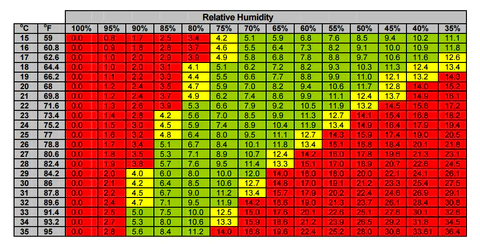
Understanding the intricate relationship between temperature and humidity is vital for successful gardening. By providing plants with the appropriate temperature range and maintaining optimal humidity levels, gardeners can create a favorable environment that promotes healthy growth and maximizes plant productivity.
• Different plant species thrive in different temperature ranges
• Tropical plants prefer warmer temperatures, while cool-season crops like lettuce and spinach thrive in cooler conditions
• Extreme temperatures, whether too hot or too cold, can damage plants or inhibit their growth
• Providing plants with the appropriate temperature range is essential for optimal growth and productivity
• Humidity refers to the amount of moisture in the air and affects plant growth by influencing transpiration
• High humidity levels can slow down transpiration, leading to damp conditions that promote fungi and bacteria growth
• Low humidity can accelerate transpiration, causing rapid moisture loss and potential wilting or dehydration of plants
• Striking the right balance of humidity is crucial for maintaining plant health
and vigor.
• Understanding the relationship between temperature and humidity is vital for successful gardening.
• By providing appropriate temperature range and optimal humidity levels,
gardeners can create a favorable environment for healthy growth and maximized productivity.
The Role of Vapor Pressure Deficit in Plant Health
Vapor Pressure Deficit (VPD) plays a crucial role in maintaining the overall health and well-being of plants. VPD refers to the difference between the amount of moisture in the air and the maximum amount of moisture the air can hold at a specific temperature. This measurement helps us understand how efficiently plants can transpire, or release water vapor through their leaves, and how well they can absorb nutrients from the soil.
Proper VPD levels are important for plant growth and development as they directly influence important physiological processes such as transpiration, nutrient uptake, and photosynthesis. When the VPD is too high, meaning the air is dry and the moisture potential gradient becomes too large, plants can experience excessive water loss and stress. Conversely, when the VPD is too low, indicating high humidity, plants may struggle to release water vapor, leading to reduced nutrient uptake and the potential for fungal diseases to develop.
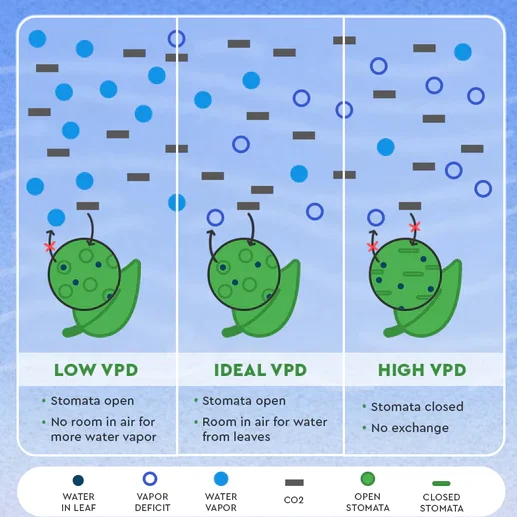
Maintaining an optimal VPD range for specific plant species can enhance their overall health and vigor. By monitoring and adjusting temperature and humidity levels, gardeners and cultivators can create an ideal environment that promotes optimal VPD values. Understanding the role of VPD in plant health is essential for maximizing crop yields and ensuring the success of indoor gardening endeavors.
Exploring the Concept of Vapor Pressure Deficit
Vapor pressure deficit (VPD) is a fundamental concept in understanding and managing the growing environment for plants. It refers to the difference between the amount of moisture in the air and the maximum amount of moisture the air can hold at a given temperature. VPD is an essential factor in plant health and growth, as it affects the rate of transpiration, water uptake, and nutrient absorption.
In simple terms, VPD measures the “thirst” of the air. When the VPD is low, the air is already saturated with moisture, resulting in low evaporation rates from the plant’s leaves. On the other hand, high VPD values indicate a significant difference between the moisture content in the air and the plant, causing the water to evaporate more quickly from the leaves. Maintaining an optimal VPD range is crucial to ensure that plants can effectively regulate their transpiration, which is the process of water movement from the roots to the leaves.
How Vapor Pressure Deficit Affects Plant Transpiration
Plant transpiration is the process by which plants release water vapor into the atmosphere through tiny pores called stomata. The vapor pressure deficit (VPD) plays a crucial role in regulating this transpiration process. VPD is the difference between the amount of moisture the air can hold when it’s saturated and the actual amount of moisture present in the air.
When the VPD is high, meaning the air is dry and can hold more moisture, plants tend to transpire more. This is because the gradient between the water content in the plant and the air encourages water movement from the plant to the atmosphere. On the other hand, when the VPD is low, indicating high humidity, the gradient becomes smaller, and transpiration is reduced.
The changes in transpiration rates due to VPD have significant implications for plant water uptake and overall health. High VPD conditions can lead to increased water loss from the plant, which could result in dehydration, wilting, and stress. In contrast, low VPD conditions can limit water uptake and nutrient absorption, impacting plant growth and development. Understanding the relationship between VPD and plant transpiration is therefore crucial for maintaining optimal plant health and maximizing growth in various gardening and agricultural settings.
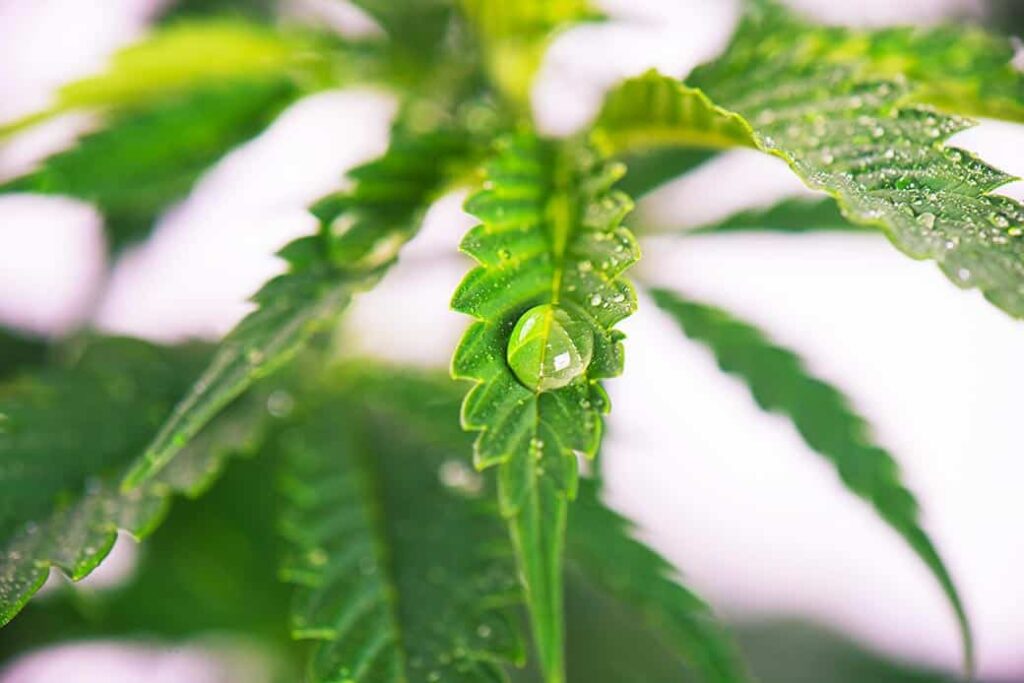
The Significance of Vapor Pressure Deficit in Indoor Gardening
Vapor pressure deficit (VPD) plays a significant role in the success of indoor gardening. VPD is a measure of the difference between the moisture content of the air and the maximum amount of moisture the air can hold at a given temperature. This parameter is crucial because it affects the plant’s ability to transpire and uptake water efficiently.
Maintaining an optimal VPD level is essential for plant health and growth. When the VPD is too high, the air becomes dry, causing plants to lose water rapidly through transpiration. On the other hand, if the VPD is too low, the air becomes saturated, reducing the plant’s ability to transpire and leading to potential issues such as stagnant growth, nutrient deficiencies, and increased susceptibility to diseases.
By understanding and adjusting VPD, indoor gardeners can create an environment that promotes optimal plant growth. Ensuring that the air’s humidity and temperature are properly balanced enables plants to transpire efficiently, allowing for the uptake of nutrients and water needed for healthy development. As a result, monitoring and optimizing VPD levels can significantly enhance the overall quality and yield of indoor gardens.
Interpreting and Utilizing a VPD Chart for Optimal Plant Growth
Interpreting and utilizing a VPD (vapor pressure deficit) chart is an essential tool for achieving optimal plant growth. By understanding the relationship between temperature, humidity, and VPD, gardeners and horticulturists can effectively manage their growing environments to create the ideal conditions for their plants.
A VPD chart provides valuable insights into the amount of moisture plants are able to transpire based on the current temperature and humidity levels. The chart typically consists of a grid with different temperature and humidity ranges, and corresponding VPD values. To interpret the chart, one must identify the current temperature and humidity in their growing environment, and locate the intersection on the grid. This intersection will provide the VPD value, which represents the difference between the amount of moisture in the air and the maximum amount of moisture the air can hold at that temperature.
Factors to Consider When Applying VPD Principles to Your Plants
Factors to Consider When Applying VPD Principles to Your Plants
Applying VPD principles to your plants requires careful consideration of several key factors. The first factor to take into account is the specific requirements of the plant species you are cultivating. Different plants have different optimal temperature and humidity ranges, and understanding these requirements is crucial for achieving optimal VPD levels. Consult reliable sources or speak to experts to determine the ideal range for your plants.
Another important factor to consider is the stage of growth your plants are in. Different growth stages have different VPD requirements. For instance, during the vegetative stage, plants generally thrive in slightly higher VPD levels, while during flowering or fruiting, lower VPD levels are often preferred. Understanding the growth stage of your plants will help you adjust the temperature and humidity levels accordingly and achieve the desired VPD range.
Additionally, you need to take into account the environmental conditions of your growing space. Factors such as light intensity, ventilation, and air movement can influence VPD. High light intensity and inadequate ventilation can lead to higher VPD, while low light and excessive humidity can result in lower VPD. Therefore, it is crucial to ensure proper environmental control to maintain the desired VPD range and create an optimal growing environment for your plants.
By considering the specific requirements of your plant species, the growth stage, and the environmental conditions, you can effectively apply VPD principles to maximize plant health and productivity. Paying attention to these factors will enable you to fine-tune the temperature and humidity to achieve the ideal VPD range and create an environment that fosters optimal plant growth and development.
Here’s a table outlining the factors to consider when applying Vapor Pressure Deficit (VPD) principles to your plants:
| Factor | Importance | Explanation |
|---|---|---|
| Light | High | Ensure your plants receive sufficient light, whether from natural sunlight or artificial lighting. Light quality and intensity are crucial for plant growth and photosynthesis. |
| Nutrients | High | Provide the right amount of nutrients and fertilizers to your plants. Proper nutrition is essential for healthy growth and development. |
| Watering | High | Maintain consistent and appropriate watering practices. Proper hydration ensures optimal plant function and nutrient uptake. |
| Pest and Disease Control | High | Regularly monitor your plants for pests and diseases. Implement preventive measures and promptly address any issues to prevent damage and maintain plant health. |
| Temperature and Humidity | Critical | Understand VPD and its impact on plant transpiration rates, stomatal opening, CO2 uptake, and overall stress. Adjust temperature and humidity levels to create an optimal VPD range for your specific plants. |
| CO2 Levels | Moderate | Monitor and maintain appropriate carbon dioxide (CO2) levels in your growing environment. Adequate CO2 enhances photosynthesis and overall plant growth. |
| Air Circulation | Moderate | Ensure proper air movement within your grow space. Good circulation prevents stagnant air, aids in temperature and humidity distribution, and supports efficient gas exchange. |
| Plant Genetics | Low | Consider the genetic traits of your plants. Some cultivars may have specific VPD preferences or tolerances. |
| Growth Stage | Low | Different growth stages (vegetative, flowering, etc.) have varying VPD requirements. Adjust environmental conditions accordingly. |
| Root Health | Low | Healthy roots are essential for nutrient absorption. Maintain proper root health through appropriate substrate, watering, and aeration. |
| CO2 Uptake | Low | VPD affects CO2 uptake by influencing stomatal behavior. Optimal VPD ensures efficient gas exchange and nutrient absorption. |
Remember that VPD is a critical metric for maximizing plant growth and yield. By carefully considering these factors and adjusting your growing environment, you can create optimal conditions for healthy and thriving plants!
Strategies for Adjusting Temperature and Humidity to Achieve Ideal VPD
To achieve ideal Vapor Pressure Deficit (VPD) for your plants, it is crucial to make adjustments to both temperature and humidity levels in your growing environment. Maintaining the right balance between these two factors can significantly enhance plant growth and overall health.
Firstly, let’s consider temperature. Depending on the specific plant species and growth stage, you can manipulate the temperature to influence VPD. Generally, increasing the temperature will result in a higher VPD, as warmer air can hold more moisture. Conversely, lowering the temperature will decrease the VPD, as cooler air has a lower capacity for moisture. It is important to note that extreme temperature variations can stress plants, so it’s wise to maintain a consistent and optimal temperature range for each specific plant type.
Next, let’s address humidity. To achieve the ideal VPD, you need to adjust the humidity levels accordingly. Higher humidity levels can increase VPD, while lower humidity levels can decrease it. Utilizing tools like humidifiers or dehumidifiers can help you control the humidity levels in your growing space. The goal is to strike a balance that ensures the plants are receiving the right amount of moisture through transpiration while preventing excessive water loss or damage due to high humidity. Fine-tuning both temperature and humidity is crucial to achieve the desired VPD and promote healthy plant growth and development.
Remember, cultivating ideal VPD requires careful monitoring and adjustment of temperature and humidity levels. By maintaining the optimal balance between these two factors, you can create an environment that supports optimal plant transpiration and overall plant health.
The Importance of Monitoring VPD for Different Plant Species
Monitoring vapor pressure deficit (VPD) is of utmost importance when it comes to cultivating different plant species. VPD refers to the difference between the amount of moisture in the air and the amount of moisture the air can hold when it’s saturated at a specific temperature. This measurement is crucial because it directly impacts plant transpiration and overall growth.
Different plant species have varying VPD requirements, and closely monitoring these levels can help ensure optimal plant health and productivity. When the VPD is too high, plants lose water too quickly through transpiration, leading to dehydration and potential damage. On the other hand, if the VPD is too low, plants may struggle to absorb enough water, limiting their growth potential.
By regularly monitoring VPD and adjusting temperature and humidity accordingly, gardeners can create a favorable environment that suits the specific needs of their plant species. This level of precision allows for more efficient nutrient uptake, enhanced photosynthesis, and improved overall plant performance. The process of plant cultivation becomes more refined and customized, leading to higher crop yields and better quality produce.
To truly grasp the importance of monitoring VPD for different plant species, it’s essential to understand the specific requirements and environmental conditions that each plant prefers. In doing so, gardeners can tailor their cultivation practices to meet the precise needs of their plants, resulting in healthier, more vibrant gardens.
References:
1. Jones, H.G. and Corlett, J.E., 1992. Current topics in plant physiology, Volume 12: Maintaining the natural balance: Plant adaptation to stressful environments. CRC Press.
2. Choudhary, S., et al., 2019. Advances in plant physiology and plant molecular biology, Volume 4: Environmental and stress physiology of plants. Apple Academic Press.
3. Monson, R. and Sage, R.F., 1995. Environmental biology of agaves and cacti. Cambridge University Press.
Here’s a table highlighting the importance of monitoring Vapor Pressure Deficit (VPD) for different plant species:
| Factor | Importance | Explanation |
|---|---|---|
| Species Variation | High | Different plant species respond uniquely to VPD levels. Exposure to varying VPD conditions can have long-term effects on plants. For instance, under high VPD, plants may exhibit increased transpiration demands and develop leaves with smaller or less frequent stomata. |
| Optimal Growth Range | Critical | Understanding the ideal VPD range for each plant species is crucial. Proper VPD ensures optimal transpiration rates, stomatal opening, CO2 uptake, and nutrient absorption. Adjust environmental factors to maintain the desired VPD range throughout growth stages. |
| Stress Reduction | Moderate | Well-regulated VPD minimizes plant stress, reducing the risk of diseases like mold and rot. Healthy, resilient plants better withstand environmental challenges when VPD is within the optimal range. |
| Real-Time Monitoring | Low | Real-time VPD monitoring using sensors and data loggers allows growers to make immediate adjustments. Advanced software and apps provide alerts, ensuring optimal conditions for plant health and productivity. |
Remember that VPD directly influences plant health, growth, and yield. By considering these factors and adjusting VPD accordingly, you can cultivate thriving and productive plant species!
Common Mistakes to Avoid When Calculating and Implementing VPD
When calculating and implementing VPD, there are some common mistakes that can hinder the effectiveness of your efforts. One mistake to avoid is relying solely on temperature and humidity measurements without considering other factors that can influence VPD. While temperature and humidity are important components in VPD calculation, other factors such as leaf surface temperature and plant canopy density should also be taken into account for more accurate results.
Another common mistake is failing to adjust temperature and humidity levels in accordance with the specific needs of different plant species. Each plant has its own ideal VPD range, and adhering to this range is crucial for optimal growth and development. Failing to account for these variations can result in subpar plant performance and potentially hinder your gardening success.
Additionally, it is important to avoid relying solely on theoretical calculations and instead monitor VPD in real time. Environmental conditions can fluctuate throughout the day, and relying on static calculations can lead to inaccurate VPD measurements. Regularly measuring and adjusting temperature and humidity levels based on actual VPD readings will ensure that your plants are consistently provided with the ideal growing conditions they require.
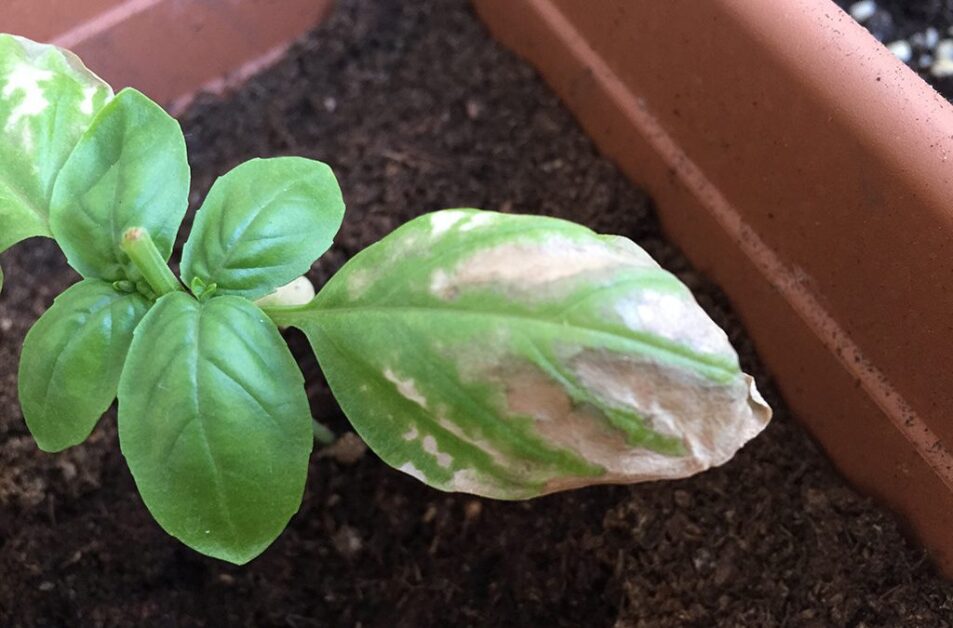
By avoiding these common mistakes and implementing VPD calculations accurately, you can ensure that your plants receive the optimal temperature and humidity conditions needed for healthy growth and development. Stay tuned for further tips and techniques to enhance your gardening journey.
Real-World Examples of VPD Applications in Agriculture and Horticulture
One real-world example of the application of Vapor Pressure Deficit (VPD) in agriculture is the cultivation of tomatoes in greenhouses. Tomatoes thrive in high humidity environments, but excessively high humidity can lead to issues such as disease outbreaks and reduced fruit quality. By carefully monitoring and adjusting the temperature and humidity levels to achieve an optimal VPD range, growers can promote healthy transpiration in the tomato plants, which is crucial for nutrient uptake and overall plant growth. This can result in higher yields, improved fruit quality, and reduced risk of fungal and bacterial diseases.
Another example of VPD application is seen in the cultivation of cannabis. Cannabis plants are sensitive to changes in temperature and humidity, and maintaining the correct VPD range is crucial for maximizing their growth and cannabinoid production. By closely monitoring the VPD levels, growers can create an environment that optimizes transpiration and nutrient uptake, leading to healthier plants and increased yields. Furthermore, controlling VPD can help minimize the risk of mold and mildew growth, which can have detrimental effects on cannabis crops. Overall, understanding and effectively managing VPD can greatly benefit both the productivity and quality of agricultural and horticultural crops.
Enhancing Crop Yields and Quality Through VPD Optimization
Enhancing crop yields and quality through VPD optimization is a key strategy for maximizing plant growth and productivity. By carefully managing the vapor pressure deficit (VPD) in our growing environments, we can create the ideal conditions for plants to thrive.
One of the main benefits of VPD optimization is its ability to regulate plant transpiration. Transpiration plays a crucial role in nutrient uptake and overall plant health. When the VPD is too high, plants may experience excessive water loss and increased stress, while low VPD levels can hinder water vapor movement and limit nutrient absorption. By finding the ideal range of VPD for different plant species, we can ensure that water and nutrients are efficiently transported throughout the plant, promoting healthy growth and development.
Additionally, VPD optimization also contributes to the control of pests and diseases in agricultural and horticultural practices. When VPD levels are properly balanced, plants are less susceptible to stress-induced diseases and pests, as the optimal VPD conditions promote their natural defenses. By understanding and adjusting environmental factors such as temperature and humidity to maintain the ideal VPD, growers can significantly reduce the risk of plant damage and yield loss caused by pathogens and pests.
Overall, VPD optimization offers a powerful tool for enhancing crop yields and quality. By fine-tuning the environmental conditions to create an optimal VPD range, gardeners and agriculturists can unlock the full potential of their plants, promoting vigorous growth, improved nutrient uptake, and enhanced resistance to pests and diseases. With the right knowledge and careful management, VPD optimization can revolutionize our approaches to cultivation and pave the way for a more productive and sustainable future in agriculture and horticulture.
Please do watch video!
What is Vapor Pressure Deficit (VPD)?
Vapor Pressure Deficit (VPD) is a measure of the difference between the amount of moisture in the air and the maximum amount of moisture the air can hold at a particular temperature. It helps determine the potential for plant transpiration and can affect plant growth and health.
How does Vapor Pressure Deficit affect plant transpiration?
Vapor Pressure Deficit influences the rate at which plants lose moisture through transpiration. A higher VPD value indicates drier air, leading to increased evaporation from plant leaves. This can result in higher transpiration rates, which can be beneficial for some plants but may also cause water stress if not properly managed.
Why is monitoring VPD important in indoor gardening?
Indoor gardening environments often have controlled temperature and humidity levels. Monitoring VPD allows growers to optimize these conditions for maximum plant growth and health. By adjusting temperature and humidity to achieve the ideal VPD range, indoor gardeners can enhance crop yields and improve overall plant quality.
What factors should be considered when applying VPD principles to plants?
When applying VPD principles, factors such as plant species, growth stage, and environmental conditions need to be considered. Different plants have varying VPD preferences, and adjustments in temperature and humidity should be made accordingly to meet their specific requirements.
What are some strategies for adjusting temperature and humidity to achieve the ideal VPD?
To achieve the ideal VPD, growers can adjust temperature and humidity levels in their growing environment. Increasing temperature while maintaining humidity can raise VPD, while decreasing temperature and increasing humidity can lower VPD. It is important to find the right balance based on the specific needs of the plants being cultivated.
How can VPD optimization enhance crop yields and quality?
By optimizing VPD, growers can create an environment that promotes optimal plant transpiration and growth. This can result in increased nutrient uptake, improved photosynthesis, and overall healthier plants. Ultimately, these factors contribute to enhanced crop yields and improved quality.
Can you provide real-world examples of VPD applications in agriculture and horticulture?
In greenhouse farming, VPD optimization is crucial for achieving higher yields and quality. Growers may use VPD charts to monitor and adjust temperature and humidity levels based on crop requirements. Additionally, in hydroponic systems, VPD management is essential to ensure proper nutrient uptake and prevent issues such as wilting or nutrient deficiencies.

Nicole Burke is a dynamic writer at SouthElMonteHydroponics, fueled by her passion for horticulture and environmental sustainability. Armed with a degree in Environmental Science from a renowned institution, Nicole’s expertise lies in hydroponic gardening, organic farming, and biodiversity conservation. Her insatiable curiosity and love for nature drive her to explore innovative techniques in hydroponics, seeking to revolutionize the way we grow crops in urban environments. Nicole’s writing reflects her deep commitment to promoting eco-conscious practices and fostering a deeper connection between humans and the natural world. Through her engaging storytelling, she inspires others to embrace sustainable living and harness the power of hydroponics for a greener future.

